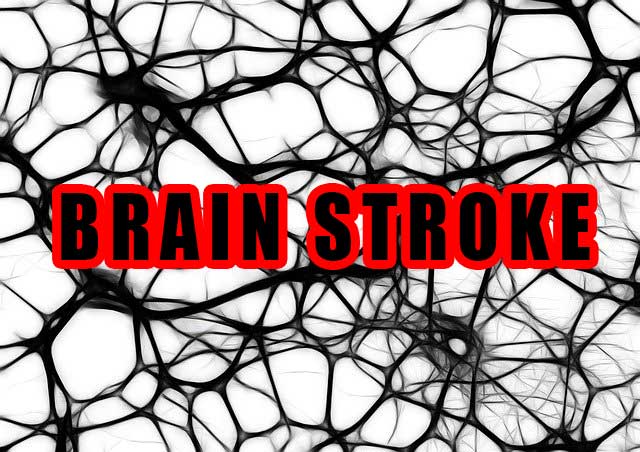Address
Dhaka-1210
Address
Dhaka-1210
When the blood supply to any part of the brain is interrupted or stopped, the tissues of the brain do not get the oxygen or sugar supply they need. This is called a stroke. Although the brain uses only a small amount of blood, brain cells are so sensitive that they begin to die soon after problems with oxygen and sugar supply. Again, the part of the body that the brain controls can become paralyzed. Usually, we can see two types of Stocks. Such as- Ischemic Stroke (Hemorrhagic Stroke) and Hemorrhagic Stroke (Hemorrhagic Stroke).
Stroke is usually caused by a problem with the blood supply to the brain. Ischemic stroke is when the blood supply to the brain is low and hemorrhagic stroke is when there is bleeding in the brain.


Bleeding in the brain or regional cessation of blood flow can have almost the same symptoms. The most common signs or symptoms of a stroke are tingling in the head, severe headache with pain in the neck, mouth and between the eyes, difficulty walking or balancing the body, tingling and numbness, Weak, numb or paralyzed on one side of the body, blurred vision, dark vision or double Ekha, nausea, or vomiting, etc.
Consult a specialist on an urgent basis as soon as the symptoms of a stroke appear. There are also some things to be careful about, such as – if you have trouble breathing or stop breathing, you have to breathe face to face, if you vomit, you have to tilt your head to one side, no food or water can be given to the infected person. In such cases, at least 2 people must go to the hospital with the patient. In this, everything from examination and treatment is a bit faster.
Quick measures to diagnose stroke are very important because in all these cases doctors do not get too much time (3 to 6 hours) on hand. Some tests may be needed to determine if a Lack of oxygen in the brain has occurred. E.g.
Strokes are most common in men over the age of 55. Also, those who may have a stroke:


Treatment of stroke depends mainly on the patient’s age, size, type of stroke, etc. If you have a Lack of oxygen in the brain, you have to be taken to the hospital immediately. Strokes are usually not completely good. The patient should always be kept in the care and may need to undergo physiotherapy. Thrombolytic therapy is a treatment for blood clots in the brain. By applying for the medicine, the blood flow is normalized by dissolving the blood clots in the brain quickly. But this cannot be done in case of bleeding in the brain. Giving this therapy within 3 hours of having a Lack of oxygen in the brain greatly reduces brain damage and reduces the chances of paralysis.
Strokes can cause a number of complications. For example, pain in different parts of the body, muscle numbness or paralysis, loss of memory, difficulty in speaking, difficulty in understanding something, difficulty in eating or swallowing food, etc.
Lack of oxygen in the brain and heart attack are two completely different things. When there is bleeding in the brain or the blood vessels close, it is called a brain stroke. A stroke occurs only in the brain, so it is also called brain stroke.
If you have a brain stroke by mistake or don’t understand, it can be too late to go to the heart doctor. The reason is that there is a special therapy within 3 hours of a brain stroke, which is given at the right time, the patient can recover completely. A patient with a heart attack should be taken to a heart doctor and a patient with a stroke should be taken to a neurologist.
When a patient comes to a neurologist or neurologist, he can quickly identify the symptoms and apply for the medicine quickly. In this case, the doctor first does a CT scan of the patient to make sure that there is bleeding in the brain. If there is bleeding in the brain, the patient’s condition may worsen with the application of thrombolytic drugs. At least two people must go to the hospital with the patient. This extra care and help save a lot of time in treating the patient. Prevention is the biggest treatment for stroke. Only a controlled lifestyle can keep people largely free from stroke.
The disease is not a plague. That is not entirely true. Before any disease can take a serious turn, various symptoms appear. In many cases, we do not take those symptoms seriously. As a result, potential risks cannot be avoided. But a little awareness can help to cure any disease before it takes shape.